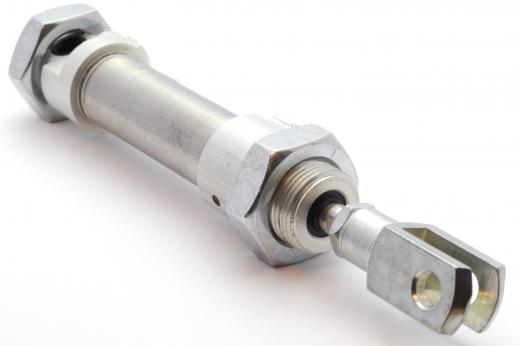Pneumatic seals are any of a class of seals used in applications including rotary or reciprocating motions. They are often used in pneumatic cylinders and valves, but do not work well under high pressure.
This type of seal requires minimal lubrication when exposed to air in order to create a tight seal. Pneumatic seals may also be exposed to high operating speeds at which the pressure is not high. Piston seals, rod seals, flange packings, u-cups, and vee-cups are a few designs of this type. The difference between pneumatic and hydraulic seals is pressure. Pneumatic seals typically have a pressure range of 1 to 150 pound-force per square inch (psi) (about 6.89 to 1,034.2 kilopascals), while hydraulic pressure can reach greater than 10,000 psi (68.9 megapascals).

Sometimes, composite seals, which are composed of two or three different materials, are used as pneumatic seals. They are, therefore, often found in products requiring one seal for many parts. A PTFE ring and an elastomer ring are often used in this situation. NASA uses this technology in their rocket systems. Composite pneumatic seals are also used in the diesel engines for trucks.
A pneumatic seal's sealing orientation can be internal, as with a rod seal; external, as with a piston; symmetrical; or axial. With internal seals, a housing bore surrounds the seal and the sealing lip touches the shaft. This type requires very little lubricant.
With external piston pneumatic seals, the seal surrounds a shaft and the lip touches the housing bore. This system requires more lubrication. Symmetric seals are the same on both sides, and axial ones fit along an axis against the housing. In both cases, however, the seals are used externally and require more lubrication.
Rotary applications need only one pneumatic seal. It is considered to be single acting because it can seal in one axial direction while the application is moving. On the other hand, a reciprocating application requires two seals, or double acting seals. In this case, one seal is needed for each of the directions. Double acting seals are more complicated than single acting ones.
